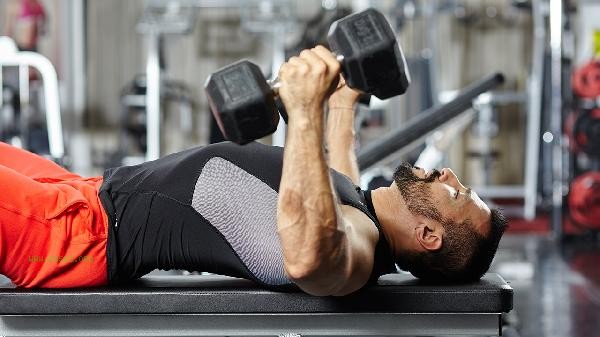Male fat chest can be improved through strength training, aerobic exercise, dietary adjustments, body fat control, and hormone balance. Fat chest is usually caused by high body fat, abnormal estrogen levels, lack of exercise, unhealthy dietary habits, and genetic factors.

1. Strength Training
Strength training targeting the chest muscle group can effectively improve the appearance of fat chest. Recommended exercises include barbell bench press, dumbbell bird press, push ups, etc., with 3-4 training sessions per week. By increasing the muscle mass in the chest, the chest lines can be made tighter, visually reducing the feeling of fat accumulation and looseness. Attention should be paid to the standardization of movements during training to avoid shoulder joint compensation.
2. Aerobic Exercise
Engaging in 4-5 sessions of moderate to high-intensity aerobic exercise per week can help reduce body fat, such as running, swimming, skipping rope, etc., lasting 30-45 minutes each time. Aerobic exercise can increase calorie expenditure and promote the breakdown of breast fat. It is recommended to use interval training to alternate high-intensity bursts with low-intensity recovery, which can improve fat burning efficiency.
3. Dietary Adjustment
Control daily total calorie intake and increase the proportion of high-quality protein, such as chicken breast, fish, egg whites, etc. Reduce refined carbohydrates and high sugar foods, and consume more vegetables and fruits rich in dietary fiber. Maintain moderate intake of healthy fats and avoid extreme dieting that can lead to metabolic decline. Daily water intake should be at least 2 liters, which helps to eliminate metabolic waste.

4. Body Fat Control
Male body fat percentage needs to be controlled below 15% to significantly improve fat chest. Adjust training and dietary plans through regular body fat testing. Although local weight loss is not feasible, after a certain degree of whole-body weight loss, chest fat will decrease accordingly. It is recommended to measure chest circumference changes every month and use a sebaceous caliper to measure subcutaneous fat thickness.
5. Hormonal balance
Part of the fat chest is related to high estrogen levels. Hormones can be regulated by supplementing minerals such as zinc and magnesium to ensure adequate sleep and reducing alcohol intake. If pathological hormone disorders are suspected, medical attention should be sought to check testosterone and estrogen levels. In some cases, medical intervention may be necessary, but it should be carried out under the guidance of a professional doctor. Improving fat chest requires 3-6 months of continuous effort, and it is recommended to set phased goals. Muscle soreness may occur during the early stages of training, which is a normal phenomenon. Diet control should be gradual, sudden and significant reduction in calories may affect training effectiveness. Maintaining a regular schedule and sufficient sleep are crucial for hormone regulation. If there is chest pain or abnormal swelling after training, it is necessary to consult a professional fitness coach in a timely manner or adhere to scientific training and dietary management for a long time. The problem of fat chest can be significantly improved.







Comments (0)
Leave a Comment
No comments yet
Be the first to share your thoughts!